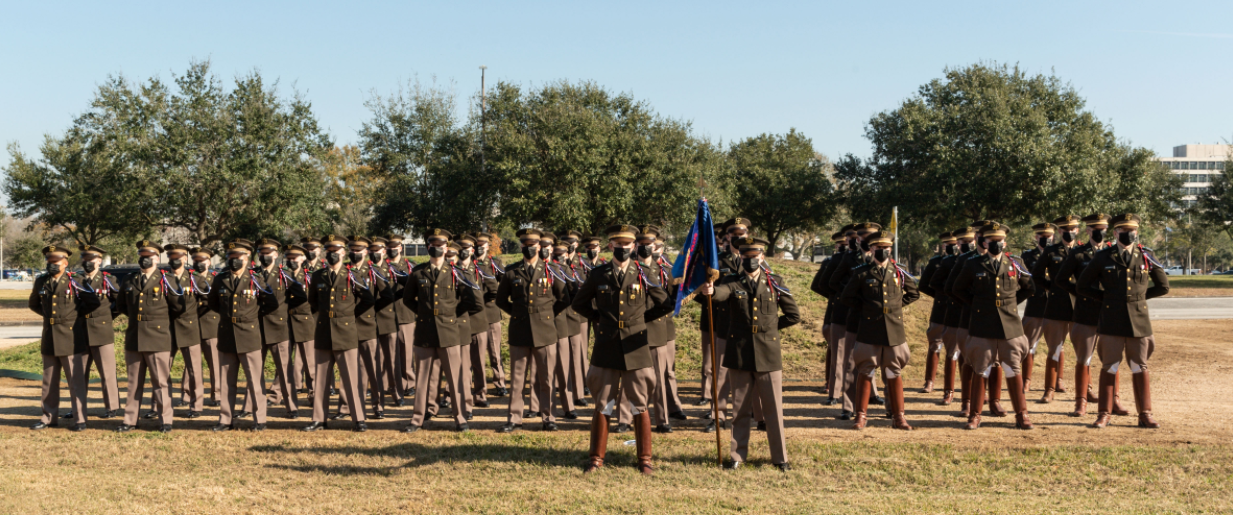The Challenger 17 Squadron: A Growing Tradition and Lasting Legacy
Perhaps one of the most inspiring traditions for NASA doesn’t even happen at a field center, but rather, Texas A&M University. Each year on Jan. 28, the Challenger 17 Squadron at Texas A&M holds a memorial for the fallen astronauts who lost their lives in the tragic Challenger accident.
The Challenger 17 Squadron, a squadron of the Texas A&M Corps of Cadets, was formed in 1986 as the “Challenger Seven.” Each member of the squadron represents one of the seven astronauts who died aboard Challenger — with the idea of the cadets serving as a living memorial.
The memorial happens around 10:30 p.m. each year as the squadron starts with “Echo Taps.” “Echo Taps,” a modification of standard military taps, is a bugle call. In this instance, the squadron stands in the middle with a bugler to each side of them, and when one bugle starts, the other echoes. Following the poignant melodies, the group recites their “campusology,” which is similar to a motto.
“On January 28, 1986, seven American astronauts lost their lives in the tragic explosion of the space shuttle Challenger. Challenger 17 was later formed in honor of these brave pioneers. The seven original Challengers are Gregory B. Jarvis, Christa McAuliffe, Ronald E. McNair, Ellison S. Onizuka, Judith A. Resnik, Francis R. Scobee, and Michael J. Smith. Each Challenger strives to remember the Seven and set the standard for future generations.”
Corporal Matthew Gillian has been integral in fostering a relationship between the squadron and NASA’s Johnson Space Center. He serves as a security police officer in the Physical Security Support Office and is a tactical medic for the SWAT team at Johnson. Gillian’s wife, Janelle, is the daughter of Lorna Onizuka and astronaut Ellison Onizuka, who died during Challenger.
“Once I found out about [the memorial], I start getting NASA people together, trying to get road trips every year to go up there and watch it,” Gillian said.
The tradition of Johnson workers traveling to see the memorial started when Ronald Lee in Johnson’s Office of Emergency Management received a photo from a friend. In it, his friend’s son, a member of the squadron, was wearing a Challenger shirt. Lee asked about it and, upon learning more, quickly told Gillian about the squadron. Gillian was soon in contact with the group and have since formed a lasting relationship. Originally, just Gillian and a smaller group would attend the ceremony — but that is changing. The group going College Station continues to grow, with more and more people joining every year.
This year was very special for Gillian and his family, as it was the first time Lorna was able to attend the ceremony at Texas A&M. She was accompanied by Michael Coats, former astronaut and former Johnson director, to honor and remember the STS-51L crew.
Gillian said of the unique squadron, “It absolutely restores my faith in humanity. Young men who stand up and say, ‘I want to challenge myself to be the best that I can be so I can represent a crew that thrived for excellence.’”
In addition to this yearly memorial, the Challenger 17 Squadron also attends Johnson’s annual Day of Remembrance. This year’s ceremony featured Johnson Director Vanessa Wyche, NASA astronaut Randy Bresnik, and former Johnson Director George W.S. Abbey as speakers.
Highlights of the ceremony, including the squadron and speakers, can be viewed in the video below.
Gillian hopes that more of the NASA family can get to see the moving service held annually by the squadron at Texas A&M.
“I want as many NASA folks to go as possible,” Gillian said. “I’m going to keep pushing and try to get as many folks up there every year as I can.”

Credits: NASA/Robert Markowitz









